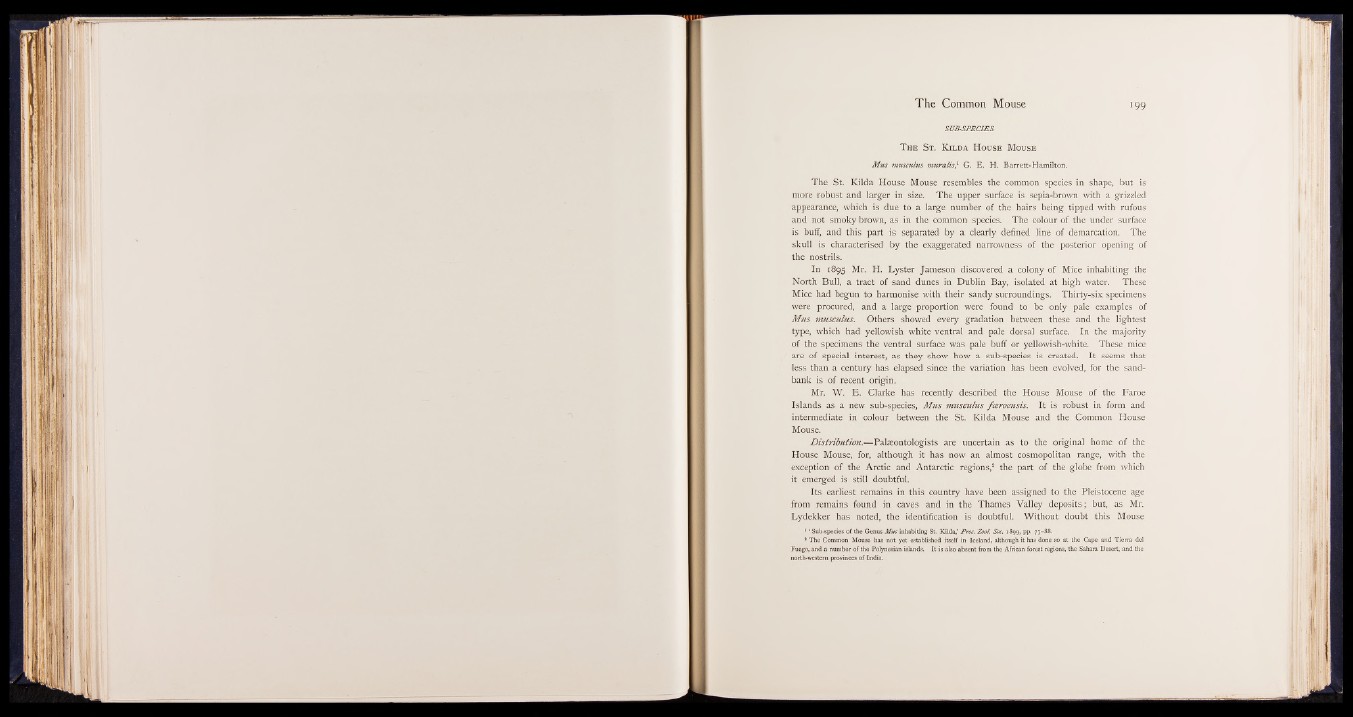
SU B -SP E C IE S
T h e S t . K i l d a H o u s e M o u s e
Mus muscuhis muralis,1 G. E. H. Barrett-Hamilton.
The St. Kilda House Mouse resembles the common species in shape, but is
more robust and larger in size. The upper surface is sepia-brown with a grizzled
appearance, which is due to a large number of the hairs being tipped with rufous
and not smoky brown, as in the common species. The colour of the under surface
is buff, and this part is separated by a clearly defined line of demarcation. The
skull is characterised by the exaggerated narrowness of the posterior opening of
the nostrils.
In 1895 Mr. H. Lyster Jameson discovered a colony of Mice inhabiting the
North Bull, a tract of sand dunes in Dublin Bay, isolated at high water. These
Mice had begun to harmonise with their sandy surroundings. Thirty-six specimens
were procured, and a large proportion were found to be only pale examples of
Mus musculus. Others showed every gradation between these and the lightest
type, which had yellowish white ventral and pale dorsal surface. In the majority
of the specimens the ventral surface was pale buff or yellowish-white. These mice
are of special interest, as they show how a sub-species is created. It seems that
less than a century has elapsed since the variation has been evolved, for the sandbank
is of recent origin.
Mr. W. E. Clarke has recently described the House Mouse of the Faroe
Islands as a new sub-species, Mus musculus fceroensis. It is robust in form and
intermediate in colour between the St. Kilda Mouse and the Common House
Mouse.
Distribution.—Palaeontologists are uncertain as to the original home of the
House Mouse, for, although it has now an almost cosmopolitan range, with the
exception of the Arctic and Antarctic regions,2 the part of the globe from which
it emerged is still doubtful.
Its earliest remains in this country have been assigned to the Pleistocene age
from remains found in caves and in the Thames Valley deposits; but, as Mr.
Lydekker has noted, the identification is doubtful. Without doubt this Mouse
1 1 Sub-species of the Genus Mus inhabiting St. Kilda,’ Proc. Zool. Soc. 1899, pp. 77-88.
2 The Common Mouse has not yet established itself in Iceland, although it has done so at the Cape and Tierra del
Fuego, and a number of the Polynesian- islands. It is also absent from the African forest regions, the Sahara Desert, and the
north-western provinces of India.